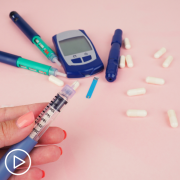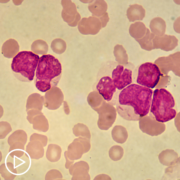Has AML Monitoring and Treatment Changed During COVID-19?
Has AML Monitoring and Treatment Changed During COVID-19? from Patient Empowerment Network on Vimeo.
Has acute myeloid leukemia (AML) monitoring changed during the COVID-19 pandemic? Watch as expert Dr. Catherine Lai shares how patients and caregivers were impacted in their AML care and gives advice on ways to provide optimal care for patients.
See More from Best AML Care No Matter Where You Live
Related Resources:

|

|

|
Transcript:
Sasha Tanori:
Can you speak on how monitoring and treating AML has changed during the pandemic?
Dr. Catherine Lai:
Yeah, so, unfortunately, as you experience it, you spent your induction in the hospital for several weeks, and when you’re able to be in the hospital with support, either from friends or from family, it makes the experience much, much easier and with COVID, especially at the height of the pandemic, we weren’t allowed our hospital. And I know several of my colleagues as well, the hospitals weren’t allowing any visitors and that put a lot of stress on the patient, on family members, on the staff, the nurses, the physicians, really the whole care team. Just because we were needing to spend extra time to make sure that everybody was updated, so either if we couldn’t do it on FaceTime, having to make sure other phone calls later, which is just…it is what it is. And we made the best of the situation. Currently, we are allowing to have a limited visitor policy, which is helpful. I think the other thing that has really changed is what we consider when we’re starting treatment, if patients obviously need induction chemotherapy and need to be in the hospital, we don’t change the recommendation based on that, but if there are patients who…
There are options whether or not the patient is done inpatient versus outpatient, I think that that’s a huge consideration in terms of quality of life and how we manage those patients.










